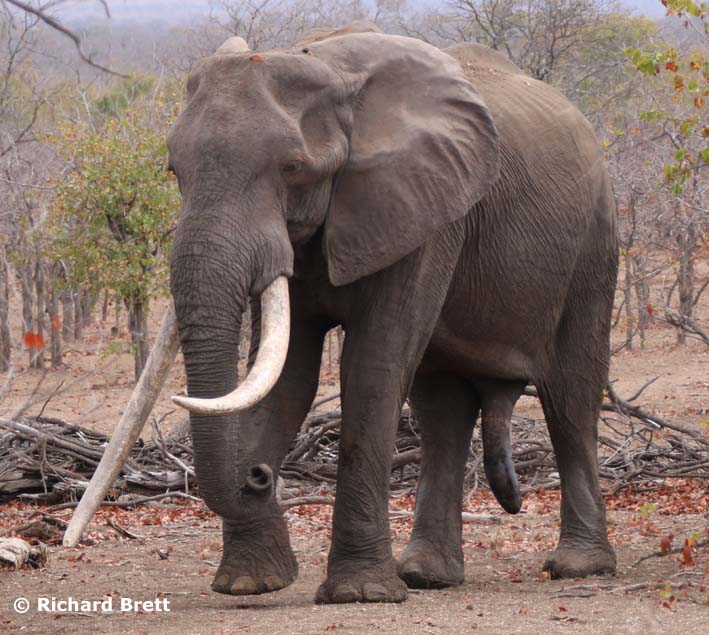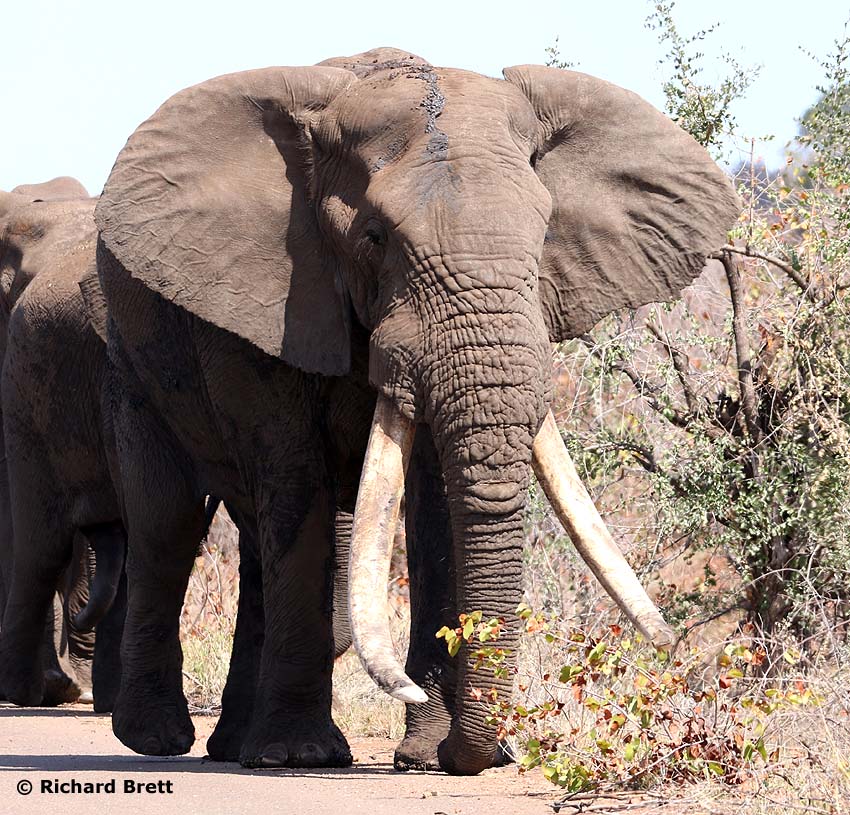Re: Tuskers of Kruger Discussions & Identification
Posted: Thu Sep 24, 2020 11:51 am
RP - lovely tusks on that elephant.
Go wild for Wildlife and help to keep our Conservation Areas pure, natural and green.
https://www.africawild-forum.com/
Richprins wrote: ↑Mon Aug 17, 2020 5:57 pm Near Croc Bridge!
Hi RP , a bit late but I think I could ID him as one of the future / potential tuskers South_01
http://www.tuskersofafrica.com/tuskerp/south1.htm
Mainly based on the last picture you posted. Have a look and maybe you can recognize your tusker
regards
Aat



South African National Parks
Sadly, field rangers discovered the carcass of the tusker, Ndlovane, late last year. Examination of the carcass and site he was found confirms he died of natural causes. The tusk data will be released soon.
https://www.facebook.com/groups/kruger. ... 652196456/Rosemary Hancock
This bull we got to know as Ndlovane, often referred to as "gentle" by the visitors fortunate enough to have seen him, appeared to enjoy the Mopani/Mooiplaas area. He was regularly seen around the Mopani and Tsendze Camps, especially over the last few years. In his younger years his range appeared more vast with submissions of sightings extending south of Mopani towards Phalaborwa as well as being seen at Makhadzi Picnic site.
Great thanks to all who submitted their sightings of Ndlovane to the SANParks Emerging Tuskers Project. You added great value to the project and his file.
https://youtu.be/kCiX40iT5eUN’watindlopfu refers to a spruit in the Kruger National Park meaning ‘spruit of the elephants’ in Tsonga and refers to the historical site where in 1987 a striking and relatively well preserved panel of rock paintings depicting a group of four elephants on a small granite koppie alongside this spruit was found. The is reference to the proof of the early existence of elephants in the Kruger National Park and therefore links to the great discover that was this bulls sudden appearance as a large tusker.
Filmed at Boyela Waterhole North of Shingwedzi on our 100 Day Kruger Park Safari.
This large bull had an interesting start in the tuskers project, a sighting on the 31st July 2014 initially created great confusion as to an ID on such an impressive bull due to an unclear location and similarities to other known bulls. Through back-tracking it was established that he was seen north of Shingwedzi towards Babalala and it was confirmed as we had suspected that we had a new tusker. Further submissions by regular contributors in quick succession recently close to Babalala with clear images of the left ear markings and tusks confirmed this bull as a new tusker to the area. This bull seems to prefer being out of the limelight which is perhaps why it took so long to find him.